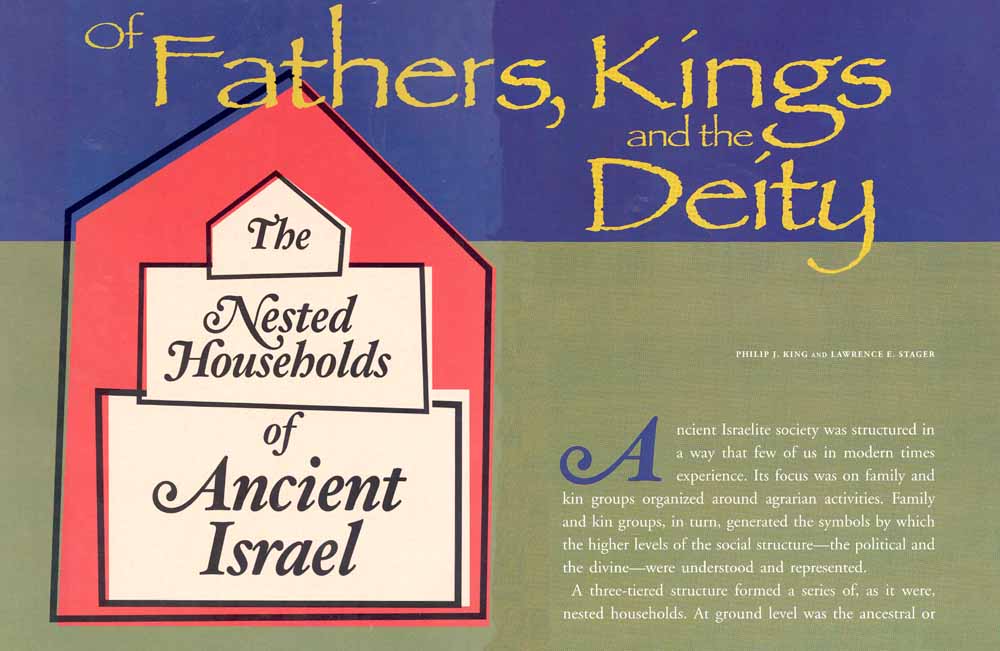Of Fathers, Kings and the Deity
The nested households of ancient Israel

Ancient Israelite society was structured in a way that few of us in modern times experience. Its focus was on family and kin groups organized around agrarian activities. Family and kin groups, in turn, generated the symbols by which the higher levels of the social structure—the political and the divine—were understood and represented.
A three-tiered structure formed a series of, as it were, nested households. At ground level was the ancestral or patriarchal household known in the Bible as bêt ’a
Already a library member? Log in here.
Institution user? Log in with your IP address.

